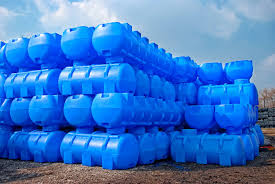Rotomolding, or the process of rotating molding, is a highly efficient and versatile manufacturing technique used to create hollow plastic components. This technique is particularly favored due to its capability of creating intricate shapes that have a smooth surface and is widely utilized in various industries, such as marine, automotive, toys as well as storage options. Here’s a comprehensive guide to understanding rotomolding and the applications it has.
The Rotomolding Process
Rotomolding involves a number of steps that produce plastic components. The process starts by putting an amount of powdered plastic into the hollow mold. It is heated before being turned around on multiple axes. As the mold warms the plastic powder melts and coats the inner areas that make up the mold. Continuous rotation assures an even distribution of the melting plastic, resulting in an even wall thickness.
After the heating process the mold, it is then cooled while it is still spinning. The cooling process solidifies the plastic and forms what is eventually. When the mold is at an appropriate temperature, it is opened to remove the finished part. This allows the production of large seamless, seamless parts with intricate geometries that are difficult to achieve with other techniques for molding.
Advantages of Rotomolding
Design Flexibility: Rotomolding excels at creating complex and intricate designs. This process permits hollow parts with different wall thicknesses as well as integrated features like ribs and bosses.
Cost-Effective: Compared with other molding methods, rotomolding can be more cost-effective, especially when it comes to low-to medium-volume production runs. The molds used in the process of rotomolding tend to be less costly than those used to make blow or injection molds.
Durability: Products created by Rotomolding are recognized for their toughness and resistance to environmental and impact stress. The process produces parts with an even wall thickness, increasing their strength and durability.
Zero waste: The process of rotomolding produces minimal waste material since the excess plastic can often be recycled. This makes it an green option when compared to other manufacturing processes.
Applications
Rotomolding can be used to produce various kinds of products. In the automotive industry, it is employed to make bumpers and fuel tanks. In the toy industry it allows the production of durable, colorful toys. It also plays a role in the manufacture of outdoor gear, such as kayaks and storage tanks due to its capacity to create massive, hollow components with sturdy qualities.
Conclusion
Rotomolding provides a distinct array of advantages when it comes to manufacturing hollow plastic components, ranging from design flexibility and cost-effectiveness to the durability and minimal waste. Its capability to make high-quality, complex parts is a preferred choice for a wide range of industries. Knowing the process of rotomolding can aid manufacturers in making informed decisions and maximize its advantages in a variety of applications.

